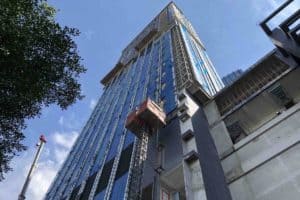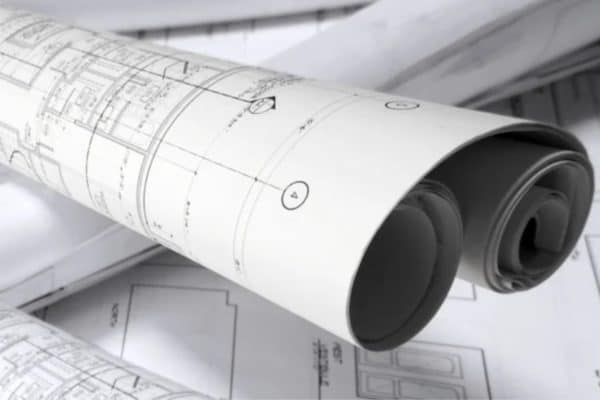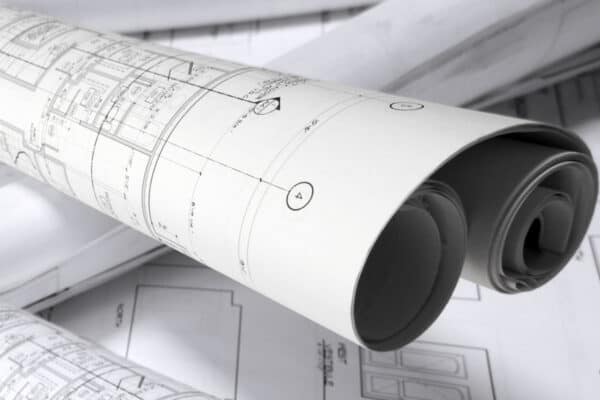Extension of Time in Construction Malaysia (Sub-Contract)
Many construction projects are unable to complete within their contract completion date due to factors such as improper work management, additional works and force majeure. When I was working as a project engineer in a subcontracting company, I’ve written many letters regarding the extension of time (EOT).
In Malaysia, there are two types of sub-contractors; a) domestic sub-contractor and b) nominated sub-contractor. Nominated sub-contractors are usually governed by PAM Sub-Contract 2006 when working on building construction projects.
According to PAM Sub-Contract 2006, project completion dates can be extended by architects if contractors apply for an extension of time with valid reasons thereby allowing contractors to work beyond the original completion date without suffering penalties due to liquidated ascertained damages.
Applying for an EOT is common in construction projects. However, many project engineers are not doing it correctly, causing their EOT applications to fail and lead to penalties due to liquidated ascertained damages (LAD).
What is an Extension of Time?
Contractors working on a construction project are governed by a contract. The contract stated the project completion date and the associated LAD rate. Contractors must agree to complete their work before the completion date in order to be awarded for the project.
Such a contract is usually known as Tender Document in Malaysia. For sub-contractors, a copy of PAM Sub-Contract 2006 is included in the Tender Document. Sometimes, PAM Contract 2006 is also included for references.
For a medium-scale project, work can be separated into 3-4 sections. For example, a high-rise office tower project may have the following completion dates:
| Work | Completion Date | LAD Amount |
|---|---|---|
| Section I: TNB Sub-Station & Access Road | 15 October 2021 | RM 10,000.00 per day |
| Section II: Mock-up Floor at Level 9 | 15 October 2021 | RM 10,000.00 per day |
| Section III: Lift Shaft & Lift Motor Room | 15 December 2021 | RM 10,000.00 per day |
| Section IV: Remaining Works | 15 November 2022 | RM 100,000.00 per day |
Contractors who delay the project beyond the required completion date are legally required to pay for LAD based on the rate stated in their agreed Tender Document.
However, contractors can request to extend the completion date if they have valid reasons such as obstructions by others, additional works and force majeures (natural disaster or anything beyond the control of anyone).
Most of the time, sub-contractors only apply for an extension of time for a particular work section related to them. The architect is the one who receives, accepts or rejects EOT applications.
However, sub-contractors don’t submit EOT applications to the architect directly but through the main contractor since they are parked under the main contractor even for nominated sub-contractors.
Extension of Time Application
For construction projects, it is not uncommon for consultants to issue Engineer’s Instructions (EI) for additional works. As a sub-contractor, you’ll need to comply with all Engineer’s Instructions (EI) and complete all associated works within your sub-contract completion date.
But, if the additional works require you to extend your work beyond your sub-contract completion date, you can request an extension of time (EOT). However, many project engineers submit EOT letters not following PAM Sub-Contract 2006 requirements and thus, not be entitled to the EOT.
You should submit two EOT letters; the first EOT letter to the main contractor to inform your intention to claim an EOT first and the second EOT letter to claim for the extension of time.
The First EOT Letter
In accordance with PAM Sub-Contract 2006, clause 21.1(a), if a sub-contractor deemed that additional work will cause a delay beyond his sub-contract completion date, the sub-contractor should provide a written notice to the main contractor with his initial estimation of the delay within 21 days from the commencement date of the additional work.
Upon receiving an Architect Instruction (AI) for additional work, you need to assess whether the additional work will cause a delay beyond your sub-contract completion date or not. If so, you’ll need to submit a written notice (usually by letter) to the main contractor within 21 days.
It is very common that the Architect’s Instruction (AI) is not provided but only the Engineer’s Instruction (EI). In this case, you may provide a written notice to the main contractor to request the Architect’s Instruction (AI).
However, supporting your EOT letters with Engineer’s Instructions is fine. The architect will need to issue their instructions later to complete the document.
Usually, I put my first EOT letter title as something like: “Time Implication of Engineer’s Instruction … (ref. no.)” and I’ll print out 4 copies; one to the main contractor, one to the architect, one to the consultant and one for myself. My own-self copy will have all the 3 companies’ stamps and signatures.
In my first EOT letter, I’ll bring up the cause of delay which is either past obstruction letters or new Engineer’s Instruction. Then, I’ll include how much time I need to complete the work upon all obstructions cleared.
The first EOT letter serves as a notification of delay for the main contractor, architect and consultant before the actual EOT application.
The Second EOT Letter
After the first letter, I’ll check back my master work schedule to see if I need to submit a second EOT letter. If so, my second EOT letter will probably have a title something like: “Application for Extension of Time”.
The second EOT letter is the actual claim for an extension of time and it should be submitted to the main contractor within 28 days from the submission date of the first EOT letter in accordance with PAM Sub-Contract 2006, clause 21.1(c).
However, not all additional works are appropriate to claim for an extension of time. Minor works that don’t affect the critical path of your work usually don’t affect your project completion date and thus, may not be entitled to an extension of time.
For instance, the change of duct sizes is not entitled to an extension of time. However, the change of the brand of mechanical fans is entitled to an extension of time.
After that, the architect will assess your EOT applications and decide whether or not you are entitled to the extension of time.
All EOT letters submitted to the main contractor should also be circulated to the architect and consultant to avoid any “miss out” or dispute by the main contractor.
Upon receiving your first EOT letter, the main contractor should “forward” or provide a written notice to inform the architect and consultant within 7 days and circulates a copy to you in accordance with PAM Sub-Contract 2006, clause 21.1(b).
If they are not informing the architect and consultant officially within 5 days (in advance), you may send them an email reminder. Nevertheless, your email reminder is not a legal requirement.
Approval of an Extension of Time
Upon the architect receive the EOT applications from the main contractor, the architect needs to either request more supporting documents from the main contractor within 28 days or accept/reject the EOT claim no later than 6 weeks.
The approval of the extension of time by the architect has nothing to do with your sub-contract completion date. If the architect approves your EOT claim after your sub-contract completion date, you are not penalized under LAD as long as the new completion date has not passed yet.
If you don’t agree with the decision made by the architect about the extension of time, you can submit a letter to the main contractor with more details to support your reasoning in accordance with PAM Sub-Contract 2006, clause 21.3.
Sometimes, the main contractor may not forward the approved extension of time to you. Hence, you need to follow up with them in order to get the final outcome.
Work Obstructed by the Main Contractor
Many times, your site progress can be delayed due to obstructions by the main contractor. For instance, the main contractor is not handing over your mechanical fan rooms to you lately thereby hindering your exhaust fan and ductwork.
In this case, you can do the same process to claim for an extension of time from the main contractor. However, I would suggest you submit at least one obstruction notification letter to the main contractor before any EOT letter.
Generally, you want to maintain a good relationship with the main contractor. Sending an EOT letter on every obstruction is not a good way to maintain your relationship with the main contractor and hence, should be avoided.
When writing letters to the main contractor regarding work obstructions, you should attach as many photos as necessary and include drawings to better explain the obstructions. Besides, you should give an action plan to the main contractor so that they can immediately take action to resolve the obstructions for you.
Furthermore, you may include the time implication of the obstructions in your letter to trigger a sense of urgency to the main contractor. However, I usually include it only in my reminder letters to better manage my relationship with other trades.
Sometimes, you may not need to send an EOT letter for every obstruction. Instead, you can gather a few major obstructions and issue one EOT letter. It is usually more efficient.
Bottom line is, you should always take photos and issue a written notice (either by letter or email but not whatsapp) to the main contractor for each obstruction. Having the discipline to keep obstruction records can be difficult but they are extremely useful when it comes to claiming EOTs and fighting backcharges.
Additional Work without an Engineer’s Instruction
Sometimes, the consultant or main contractor may ask you to proceed with additional works without official instruction. If you have spare time and you trust them, you may proceed accordingly.
However, I would advise you not to proceed without at least a written confirmation.
If the consultant or main contractor is giving excuses for not issuing an official instruction, you can take the initiative to submit a confirmation of verbal instruction (CVI) to the main contractor for an official confirmation.
A confirmation of verbal instruction (CVI) includes the date and time of the verbal instruction and the name of the person and company who are issuing the verbal instruction. It can be used as a supporting document to claim for variation orders and EOTs.
How to Write an EOT Letter?
An EOT letter can be as simple as two sentences or be a little bit more professional by bringing up contracts and clauses. Here is an example of the first EOT letter:
Subject: Time Implication of Engineer’s Instruction ACLG/EXP/2021/10/17
With the above subject captioned, we hereby notify you on the time implication of Engineer’s Instruction with reference number: ACLG/EXP/2021/10/17 dated 17 October 2021.
We received the said Engineer’s Instruction on 18 October 2021 for the additional ductwork at B1 (see the attached layout drawing). After our initial assessment, we estimated that the additional work shall require 6 weeks to complete.
Since our original sub-contract completion date for Section II: Podium is on 15 November 2021, we expect a delay due to the additional work and the new completion date is estimated to be on 29 November 2021.
Hence, we are writing to inform you that we may follow up with an extension of time claim in accordance with PAM Sub-Contract 2006, clause 21.1(c).
We trust that the above is appropriate.
Thank you.
The purpose of the first EOT letter is to inform your intention to claim for an extension of time. Hence, the date is the most important element to be included in the letter.
For the second EOT letter, you’ll need to provide more details to support your requested new completion date. The architect must answer the client regarding your EOT request. Hence, they tend to bring forward your requested date.
The second EOT letter can include the critical path of your master work program. By supporting with a master work program, the architect can see the affected subsequent works and thus, you’ll have a better chance of getting a further completion date.
In addition, you can include a work breakdown from procurement and fabrication to delivery, installation and commissioning so that the architect understands the amount of work required and thus, increasing your chance of getting a longer completion date.
If you have anything to add (or ask) about this topic, leave a comment down below!









